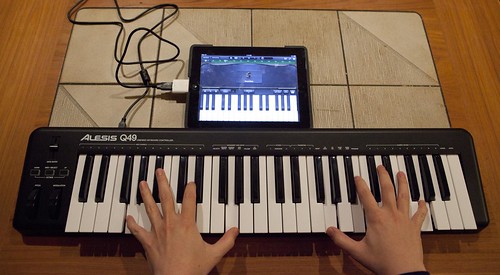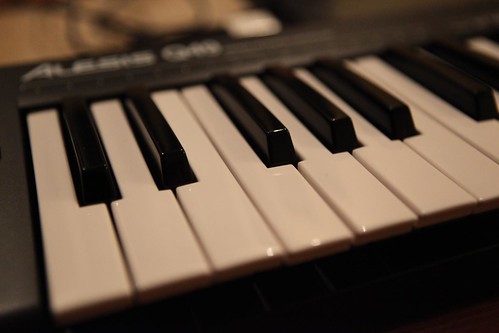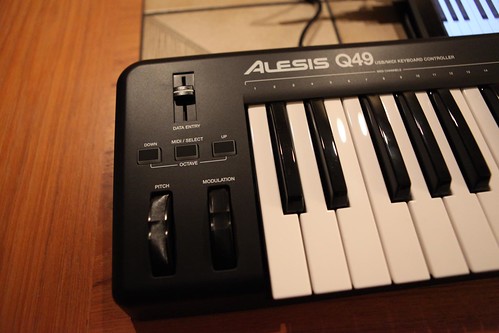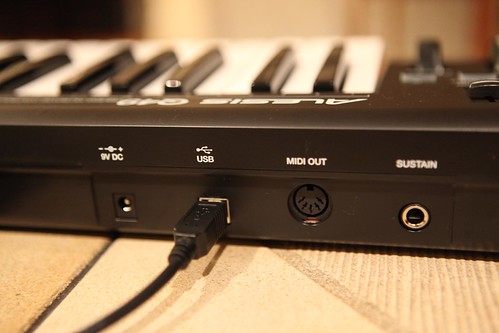I just bought an Alesis Q49 USB Synthesizer over the weekend. It hooks up very easily to my iPad with GarageBand. Here is the new rig in action, doing some 80's synth pop: a cover of Joe Jackson's tune "Steppin' Out."
I have enjoyed playing music on the iPad a lot so far. However (as you may have seen from earlier blog posts), playing on the iPad's touch screen can be difficult. You can easily mess up! So I finally decided to try it with a real keyboard hooked up to it. I have an old Alesis QS 6.2 keyboard, but I gotta admit - that thing is big and heavy. I was too lazy to get it out again. Instead, I bought this cool Alesis Q49. It's a USB synth that plugs right into the iPad (or a computer). It's a compact 49 keys - and it only weighs 5 pounds! My entire iPad + keyboard rig weighs under 10 pounds - ultra portable! Even better, I bought it on Amazon for only $80. It came in on Friday, and my video was done by Monday! :)
Playing the Alesis is pretty enjoyable. I do admit - since I have a real piano, I was wondering how the feel of plastic, non-weighted keys would be. But the Alesis wasn't bad at all. The keys are full-sized, and the spring weights felt just fine. 49 keys is just enough to play songs with both hands. Many other USB synths are tiny - 25 or 37 keys - which is fine for one hand electronic riffs, but not good for solo playing. The one drawback with 49 keys is that the keyboard is kinda long. It doesn't fit in a backpack like the iPad does. But it should fit well in a duffel bag or gym bag.
The Alesis Q49 is a MIDI controller, not a "real" synthesizer. What does that mean? It doesn't generate its own sounds. You need to plug it in to some kind of computer that has music software. In this case, I plug it into my iPad with GarageBand. You can plug it into your Mac or PC too. There are a few simple controls on the keyboard. There are dials for pitch and modulation control, up/down octave keys, and a volume control. That's all you really need. In the back, you can plug the keyboard into a machine using USB or MIDI outputs. I used the included USB cable, attached it to the Apple's iPad Camera Connection Kit (~$30 adapter), then straight into the iPad. You can also hook up a sustain pedal if you like. You can optionally buy a 9V power adapter to plug into it. This is probably useful if you are playing a long gig. But if you are just messing around a for a bit, your iPad actually seems to do a fine job at supplying power to the keyboard.
Well, I hope you enjoyed this test drive of my iPad with the USB keyboard! Stay tuned for more music to come!



